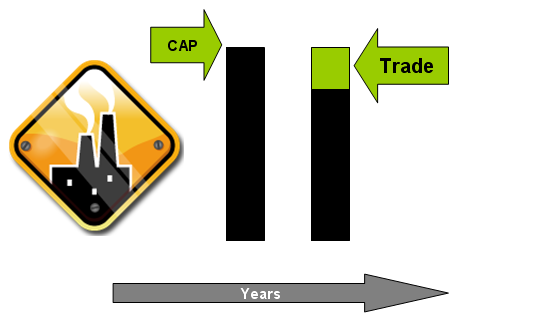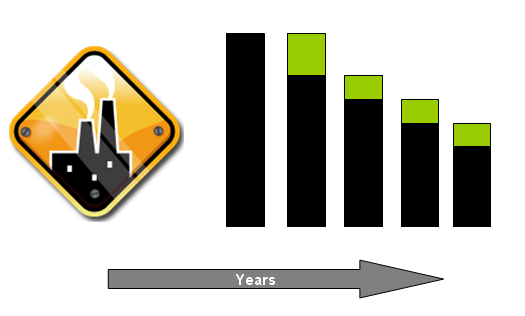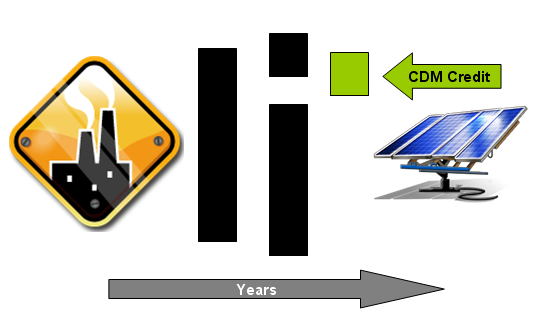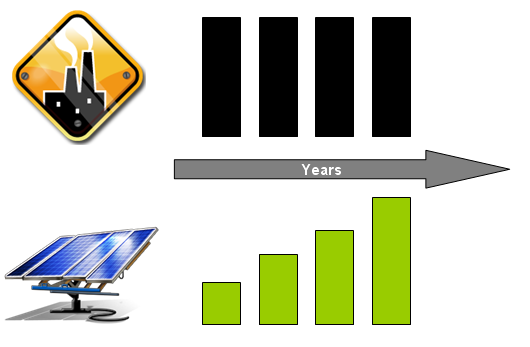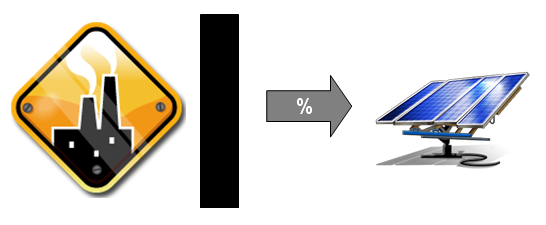De SDE PV subsidie aanvraag kan hier via internet plaatsvinden. U heeft een DigID nodig om uw aanvraag te doen. Deze kunt u hier aanvragen (doe dit op tijd).Als u de aanvraag doet kunt u deze opslaan zodat u het niet op het laatste moment hoeft te doen.
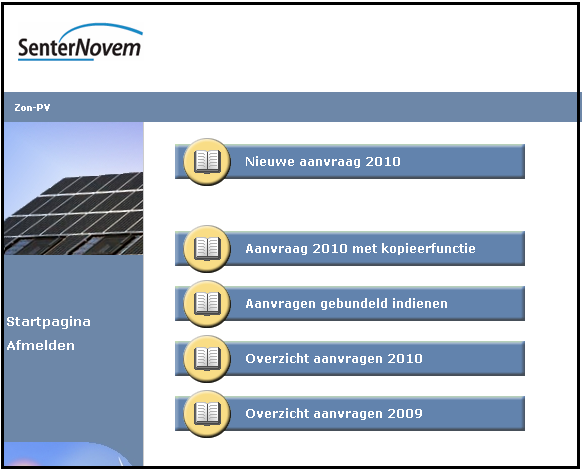
Hieronder volgen de vragen en keuzen die u kun/moet maken en de antwoorden of opmerkingen van SDE in het formulier. SDE rekent met kosten van 4 Euro/Wp.
Specifieke Gegevens
Vraag : Is de Zon-PV-installatie eerder gebruikt?*
Antwoord Ja : SDE : "U komt niet in aanmerking voor subsidie. Er wordt geen subsidie verstrekt indien de Zon-PV-installatie geheel of gedeeltelijk bestaat uit gebruikte materialen."
Antwoord Nee: Volgende vraag
Vraag : Wordt de Zon-PV-installatie geplaatst naast een al bestaande Zon-PV-installatie?*
Antwoord Ja : SDE : "Alleen de productie van een nieuwe installatie komt in aanmerking voor subsidie. Deze moet dan ook afzonderlijk bemeterd worden door een brutoproductiemeter."
Antwoord Nee: Volgende vraag
Vraag : Wat is het vermogen in Wp (Watt-piek) van de Zon-PV-installatie waarvoor u
SDE-subsidie aanvraagt?*
Antwoord : U voert in een waarde van minder dan 1 Wp (bv. 500Wp) SDE : "U kunt voor dit vermogen geen SDE-subsidie aanvragen."
Antwoord : U voert in een waarde tussen 1 kWp tot 7,5 kWp (bv. 1500Wp) SDE : "U doet een aanvraag in de kleine categorie. Bij het door u opgegeven vermogen moet u rekening houden met een investeringsbedrag van € 6.000. Dit bedrag is een indicatie. Het daadwerkelijke investeringsbedrag kan sterk afwijken.
Antwoord : U voert in een waarde tussen 7,5 kWp tot 15 kWp SDE : "U doet een aanvraag in de kleine categorie.
Let op: Voor Zon-PV-installaties groter dan 7.500 Wp en kleiner dan of gelijk aan 15.000 Wp geldt dat zij wel subsidie kunnen krijgen, maar nooit meer dan voor een installatie van 7.500 Wp (7,5 kWp). De subsidie is gemaximeerd op een jaarproductie van maximaal 850 vollasturen x 7,5 kWp = 6.375 kWh (kilowatt-uur) per jaar.
Bij het door u opgegeven vermogen moet u rekening houden met een investeringsbedrag van € 32.000. Dit bedrag is een indicatie. Het daadwerkelijke investeringsbedrag kan sterk afwijken.
Extra Vraag: Wilt u dat de subsidie automatisch start op het moment dat u bij Certiq staat geregistreerd als producent van duurzame energie?"
Antwoord Ja : Dan zal uw subsidie vergoeding waarschijnlijk eerder gaan lopen dan dat u de installatie draaiende hebt, waardoor u van de wettelijke 15 jaar een bepaalde periode inlevert.
Antwoord Nee : SDE : "Wat is de beoogde datum waarop u de subsidie wilt laten starten?". U moet de datum inbedrijfname weten (bijvoorbeeld door afspraken te hebben gemaakt met de leverancier.
U kunt er ook voor kiezen dat de subsidie later ingaat, zodat u zeker weet dat u de volle 15 jaar vergoeding zult ontvangen.
Vraag : Wat is de beoogde datum van ingebruikname van uw Zon-PV-installatie?
Hier vraagt SDE in ieder geval om, ongeacht de inschrijvingsdatum bij Certiq. SDE zal waarschijnlijk deze datum van subsidie ingang aanhouden tenzij u de inschrijving van Certiq als datum hebt opgegeven.
Vraag : Is op de locatie waar de Zon-PV-installatie wordt gerealiseerd sprake van
bestaande bouw of nieuwbouw?
In geval Nieuwbouw : SDE : "In geval van nieuwbouw kan het zijn dat voor deze locatie nog geen
straatnaam en/of huisnummer bestaat. U kunt dan een kadastraal nummer
en/of een bouwnummer opgeven." Dit kan in het formulier.
Antwoord : U vult uw adres gegevens in (postcode, huisnummer, de rest wordt automatisch ingevuld)
Vraag : Vraagt u op deze locatie voor meer dan één Zon-PV-installatie subsidie aan in dezelfde categorie?
Antwoord Ja : SDE : "Voor hoeveel Zon-PV-installaties vraagt u op deze locatie en in dezelfde categorie SDE-subsidie aan?" (Dit moet u invullen)
SDE :"Verklaart u voornemens te zijn (of verklaart u namens de aanvrager dat deze voornemens is) bij toekenning van subsidie bovenstaand aantal separate Zon-PV-installaties te realiseren op de genoemde locatie, waarbij de installaties afzonderlijk worden geïnstalleerd en bemeterd? Verklaart u tevens dat er op de locatie van de aanvraag voldoende geschikt (dak)oppervlak beschikbaar is om bovenstaand aantal Zon-PV-installaties te realiseren?
Let op: Indien bij controle blijkt dat dit niet het geval is, kan de aan u verleende subsidie worden ingetrokken.* "
Antwoord Nee : Volgende vraag
Vraag : Is de locatie waar u de Zon-PV-installatie wilt plaatsen in uw eigendom (of in eigendom van de partij waarvoor u de subsidie aanvraagt)?
Antwoord Ja : Volgende vraag
Antwoord Nee : Extra Vraag : Heeft u een schriftelijke overeenkomst met de eigenaar om op deze locatie de Zon-PV-installatie te mogen realiseren?
Antwoord Ja : SDE : "Als u de overeenkomst bij deze aanvraag meestuurt kan dat de
afhandeling van uw aanvraag bespoedigen. Wilt u de overeenkomst
meesturen? U moet dan later in het aanvraagformulier deze overeenkomst
bijvoegen."
Antwoord Nee : Volgende vraag!
Vraag : U moet aangeven of u een particulier, Organisatie of intermediair bent
Persoonsgegevens en ondertekening
U wordt vervolgens om uw pesoonsgegevens gevraagd (een deel is vooringevuld) en oa uw IBAN nummer (dit is de internationale code voor uw bankrekening nummer (u vind dit doorgaans op uw rekening afschrift).
Opslaan
Vervolgens kunt u uw aanvraag opslaan.
Wij begeleiden uw aanvraag en installatie als intermediair, neem contact met ons op via info@greencheck.nl
